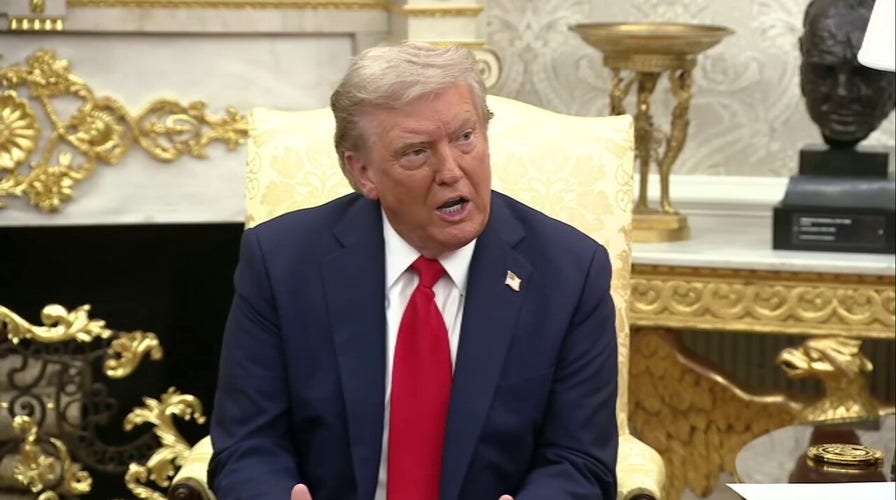Trump says ceasefire not necessary during high-stakes meeting with Zelenskyy
President Donald Trump said a ceasefire agreement is not necessary when pressed about his administration's efforts to end the war between Russia and Ukraine during a high-stakes meeting with Ukrainian President Volodymyr Zelenskyy on Monday.
President Donald Trump said Thursday he's been "let down" by his relationship with Russian President Vladimir Putin.
"The one that I thought would be easiest would be because of my relationship with President Putin," Trump said during a joint press conference in London with United Kingdom Prime Minister Keir Starmer. "But he's let me down. He's really let me down. Was going to be Russia and Ukraine. But we'll see how that turns out."
Months of U.S.-led peace negotiations — including an Alaska summit between Trump and Russian President Vladimir Putin — have not led to breakthroughs in ending the war in Ukraine.
"War is a different thing," Trump said. "Things happen that are very opposite of what you thought. You thought you're going to have an easy time or a hard time, and it turns out to be the reverse."
TRUMP AND ZELENSKYY TO MET AS POLAND PRESSURES NATO ON NO FLY ZONE OVER UKRAINE
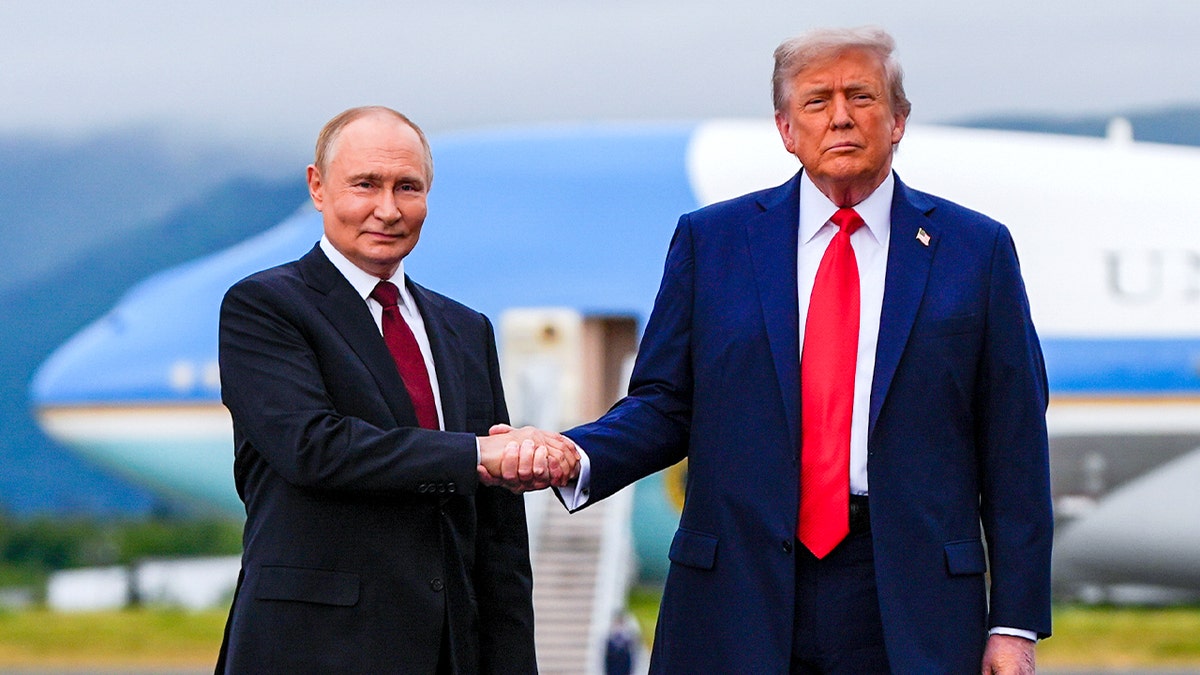
President Donald Trump met Russian President Vladimir Putin in August at Joint Base Elmendorf-Richardson, Alaska in an effort to end the war. (Julia Demaree Nikhinson/The Associated Press)
Trump and Ukrainian President Volodymyr Zelenskyy may meet on the sidelines of the United Nations General Assembly next week, Secretary of State Marco Rubio said Wednesday. Putin will not be in attendance — Russia will be represented by Foreign Minister Sergey Lavrov.
Trump said of Putin: "He's killing many people, and he's losing more people that he's, you know, than he's killing. I mean, frankly, the Russian soldiers are being killed at a higher rate than the Ukrainian soldiers, but, yeah, he's let me down. I don't like to see — it's death."
The president then mused that the war "doesn't affect the United States."
To Starmer, he said, "Of course, you are a lot closer to the scene than we are. We have a whole ocean separating us. But I will say this. It's millions of people have died in that war. Millions of souls. And they're not American soldiers, mostly soldiers. As you know, the soldiers are being killed at levels nobody's seen since the Second World War, but they're being, they're being killed. And I feel I have an obligation to get it settled for that reason."
Meanwhile, Ukraine expects $3.5 billion in U.S. weapons to soon funnel in to fund its war effort, Zelenskyy said Wednesday.
"We will definitely have Patriot and HIMARS missiles," he said during a press conference on Wednesday.
"We have received more than $2 billion from our partners specifically for the PURL program. We will get additional funds in October. I think we will reach about $3.5–3.6 billion," the president added. That funding came from Ukraine’s allies in Europe.
The U.S. approved the first new weapons packages for Ukraine this week. Undersecretary of Defense for Policy Elbridge Colby signed off on two $500 million packages under the PURL program, Reuters first reported.
"The Department of War has facilitated this first sale of weapons in line with President Trump’s America First priorities and efforts to bring this brutal war, which was brought on by Joe Biden’s incompetence, to an end," a senior administration official told Fox News Digital, confirming the sale.
The Prioritized Ukraine Requirements List, or PURL, was created to streamline Ukraine’s access to advanced weapons by pooling allied contributions into U.S.-managed procurement. Instead of sending cash directly to Kyiv, partners commit funds that Washington uses to acquire systems from American defense firms.
Germany, Poland, the UK, and other NATO members are believed to be leading contributors, though the exact breakdown hasn’t been made public.
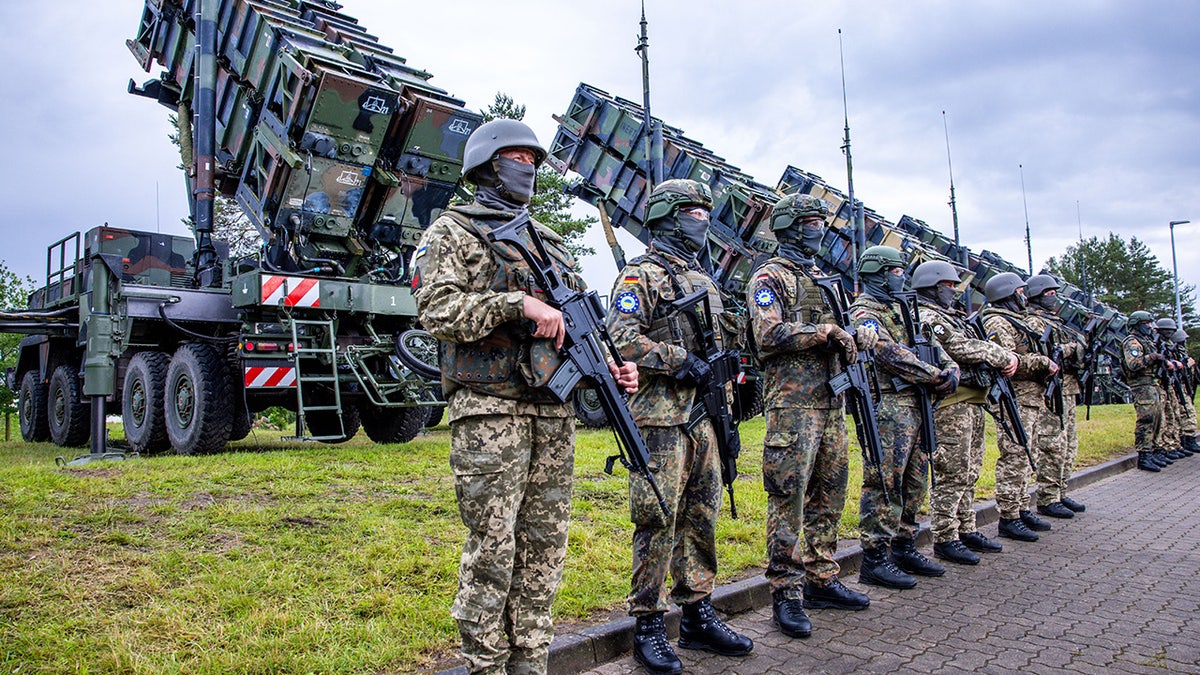
A U.S.-made Patriot missile defense system is one of the high-end weapons Ukraine says it will soon receive through new allied funding. (Jens Büttner/Getty Images)
TRUMP'S NATO DEAL TO ARM UKRAINE WINS OVER GOP SKEPTICS
Trump’s decision to rely on NATO allies’ money rather than seek additional congressional appropriations marks a sharp shift in U.S. policy, allowing him to sustain Ukraine’s arsenal while deflecting criticism from lawmakers wary of more taxpayer-funded aid.
In July the Pentagon halted weapons shipments to Ukraine, which had been approved under the Biden administration, citing strains on the U.S.’s own munitions stockpiles. Secretary Pete Hegseth ordered a review of U.S. stockpiles after years of depletion for the war in Ukraine, as well as operations against the Houthis in the Middle East and assistance to Israel for its war in Gaza.
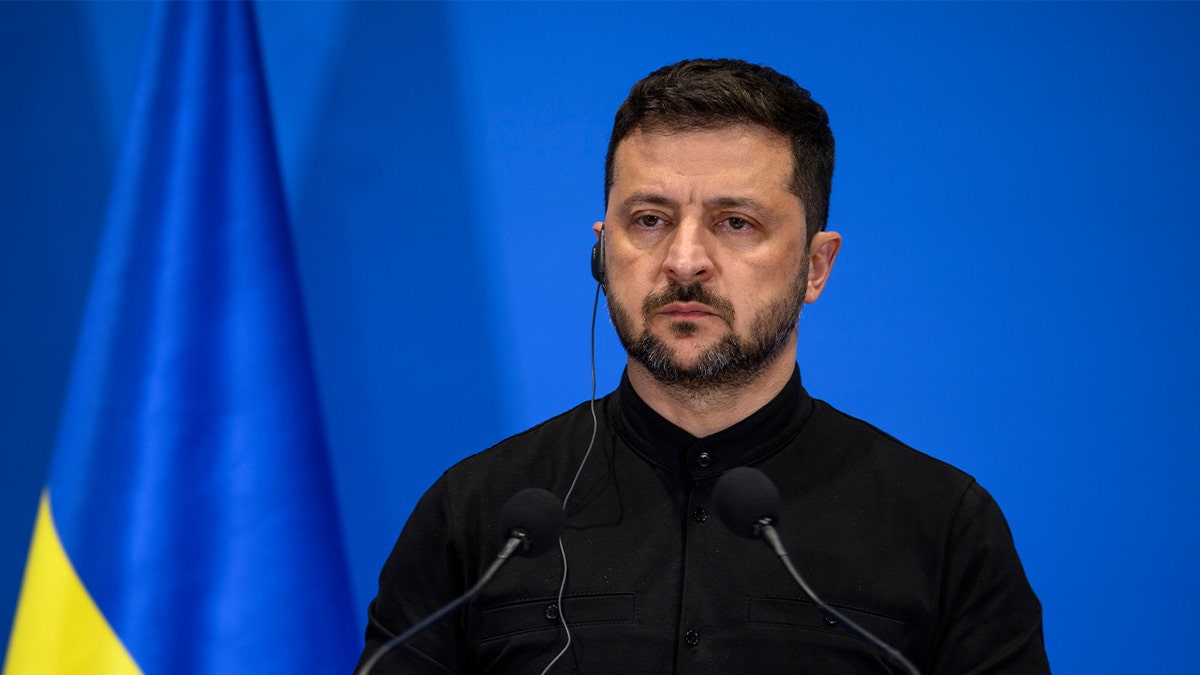
Ukrainian President Volodymyr Zelenskyy announced Kyiv expects $3.5 billion in weapons under a new program backed by European allies. (Antonio Masiello/Getty Images)
The renewed weapons flow also underscores strains on the U.S. defense industrial base. The Pentagon is racing to double monthly artillery shell output, but leaders admit replenishment will take years amid competing demands from Ukraine, Israel and operations in the Middle East.
PENTAGON HALTS SOME WEAPONS SHIPMENTS TO UKRAINE OVER CONCERNS ABOUT US STOCKPILES
Army Chief of Staff Gen. Randy George has warned that using multimillion-dollar interceptors against cheap drones is unsustainable, urging industry to innovate toward lower-cost defenses. The imbalance between high-end U.S. systems and Russia’s mass use of inexpensive drones and artillery is now one of the war’s defining strategic challenges.
The Army’s goal is to double the monthly output of 150mm rounds by leveraging advanced automation.
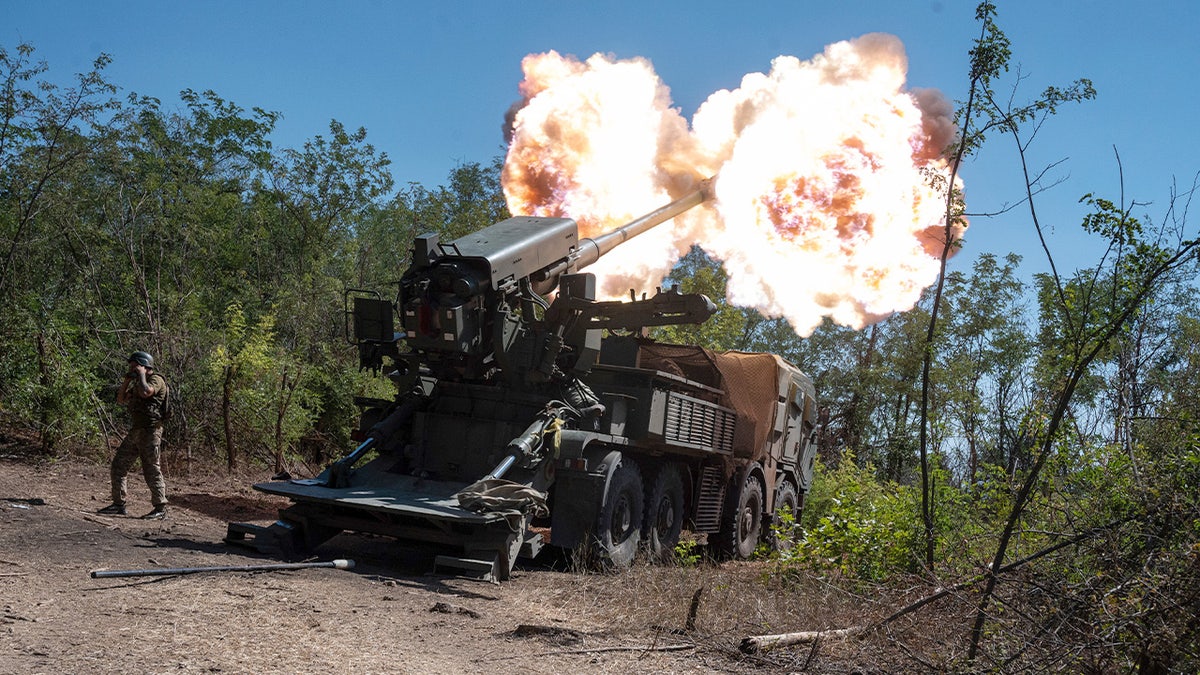
Ukrainian servicemen of the 44th artillery brigade fire a self-propelled howitzer towards Russian positions at the frontline in the Zaporizhzhia region, Ukraine, Wednesday, Aug. 20, 2025. (AP Photo/Danylo Antoniuk)
CLICK HERE TO GET THE FOX NEWS APP
Gen. George said the service branch is also looking at new ways companies can produce munitions "that get us back to the cost curve," meaning cost-equivalent or cheaper than the incoming weapons they are shooting down. "What we don't want to do is shoot $3 million missiles at $50,000 drones or $10,000 drones."




















